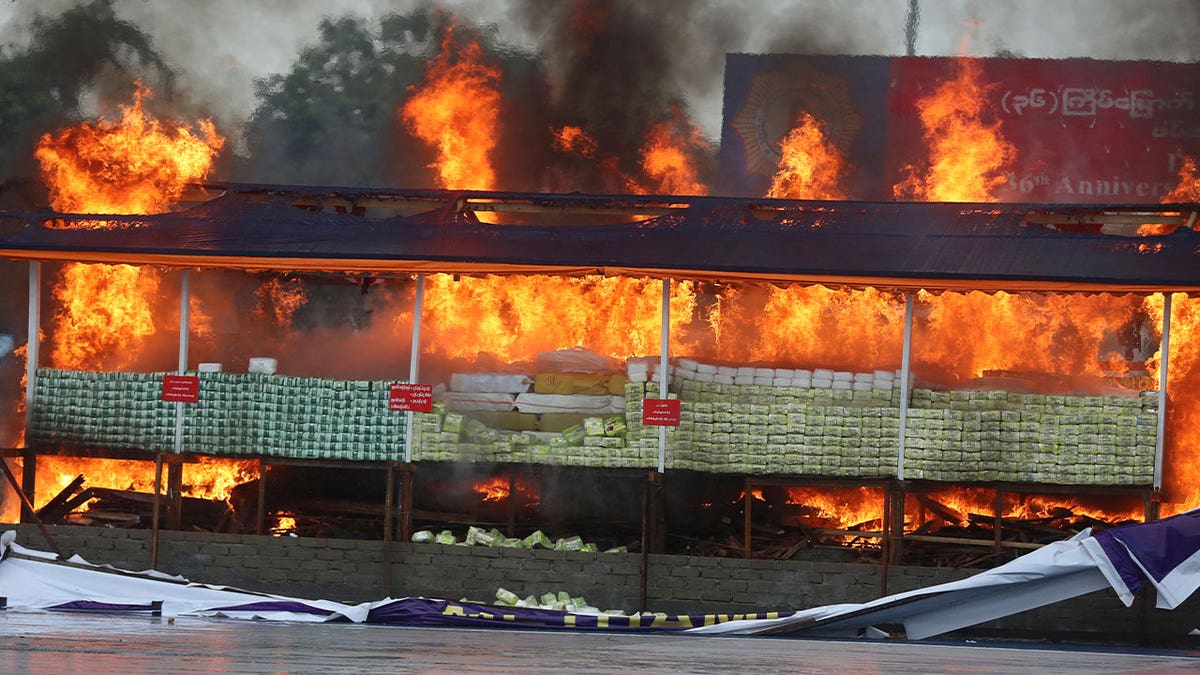Authorities in Myanmar incinerated illegal drugs worth over $446 million on Monday, coinciding with the International Day against Drug Abuse and Illicit Trafficking. This massive destruction of narcotics, including opium, heroin, methamphetamine, and other substances, took place in Yangon, Mandalay, and Taunggyi. The largest incineration occurred in Yangon, where $207 million worth of seized drugs and precursor chemicals went up in flames.
This action comes amidst warnings from UN experts about a surge in opium, heroin, and methamphetamine production within Myanmar. These increased narcotics exports pose a significant threat to markets across South and Southeast Asia. Myanmar's history of drug production is deeply intertwined with political instability and economic hardship stemming from decades of armed conflict. Despite efforts to encourage alternative crops, the nation remains the world's second-largest producer of opium and heroin, after Afghanistan, and a major source of methamphetamine.

The image above depicts the burning of illegal narcotics on the outskirts of Yangon, Myanmar, on June 26, 2023, in observance of the International Day against Drug Abuse and Illicit Trafficking. (AP Photo/Thein Zaw)
Last year, authorities destroyed over $642 million worth of seized illegal drugs. Experts link the recent surge in drug production to the political turmoil and violence that has engulfed Myanmar since the military coup two years ago. The ensuing conflict between the military government and pro-democracy forces has created an environment conducive to illicit drug activities.
A UN report highlighted a significant increase in opium cultivation following the military takeover. Poppy cultivation rose by a third in the past year as eradication programs faltered and the struggling economy pushed more people into the drug trade. Opium production estimates were 440 tons in 2020, increasing slightly in 2021, and then jumping to an estimated 870 tons in 2022.
The UN has also reported a dramatic rise in methamphetamine production in recent years, leading to lower prices and the expansion of trafficking routes. The military government alleges that certain ethnic armed groups, controlling significant territories, are involved in drug production to finance their insurgencies and resist the peace process. These groups are reluctant to abandon the lucrative profits derived from the drug trade. Historically, some rebel groups have used drug revenues to support their fight for greater autonomy.
A significant portion of the opium, heroin, and methamphetamine exported from Myanmar is destined for other Southeast Asian nations and China.








